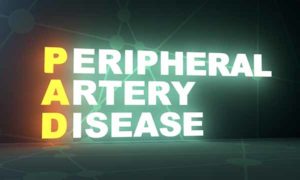
Your peripheral arteries carry blood to your limbs. If these arteries begin to narrow, your arms and legs won’t receive the necessary amounts of blood they need to function properly.
Today we’re diving into the causes, symptoms, and treatment options of peripheral artery disease, a type of vascular disease.
Causes of Peripheral Artery Disease
It’s common to think that peripheral artery disease is simply a lack of blood flow to your extremities, most commonly affecting your legs. Although that’s part of the issue, the core issue is that your arteries have narrowed and cannot carry necessary amounts of blood anymore.
Patients with narrowed arteries in the arms and legs are likely to have narrowed arteries elsewhere, too, like in the heart and brain.
Why Are My Arteries Narrowing?
Arteries become narrow because of atherosclerosis, or when fatty deposits build up along the artery walls. This buildup stems from issues like high cholesterol, poor eating habits, and tobacco use. Smoking tobacco and eating food that are high in saturated fat can each cause your arteries to fill up with plaque, restricting blood flow to certain areas of the body.
Symptoms Of Peripheral Artery Disease
Since PAD is a vascular disease that affects your extremities, you’ll experience several changes in the look, feel, and function of them, especially your legs.
Watch out for signs on your legs and feet like:
- Cramps that come about during movement like exercise and regular walking
- Weakness or numbness
- Irregular skin color
- Irregular hair growth or hair loss
- Cold sensations
- Sores that won’t heal
- Shiny looking skin
- Weak or missing pulse
- Erectile dysfunction (men)
Who Is at Risk for Peripheral Artery Disease?
Patients with the highest risk of developing PAD are those who smoke and/or have diabetes. Other health threats include:
- High blood pressure
- High cholesterol
- Obesity
- Aging, 50 years or older
- Family history of PAD, heart disease, or stroke
If you are at a higher risk of developing PAD, you can make beneficial lifestyle changes like:
- Adapting to healthier diets
- Incorporating movement and exercise into your daily activities
- Quitting tobacco use
All of these changes can help your arteries open up and restore regular blood flow.
There are treatment options and support for peripheral artery disease and other vascular diseases. Middle Georgia Heart is committed to providing the highest level of cardio care to our patients with PAD or any other heart condition. For the right diagnosis and treatment plan, schedule an appointment with our cardiovascular specialists today: 478-207-5224
